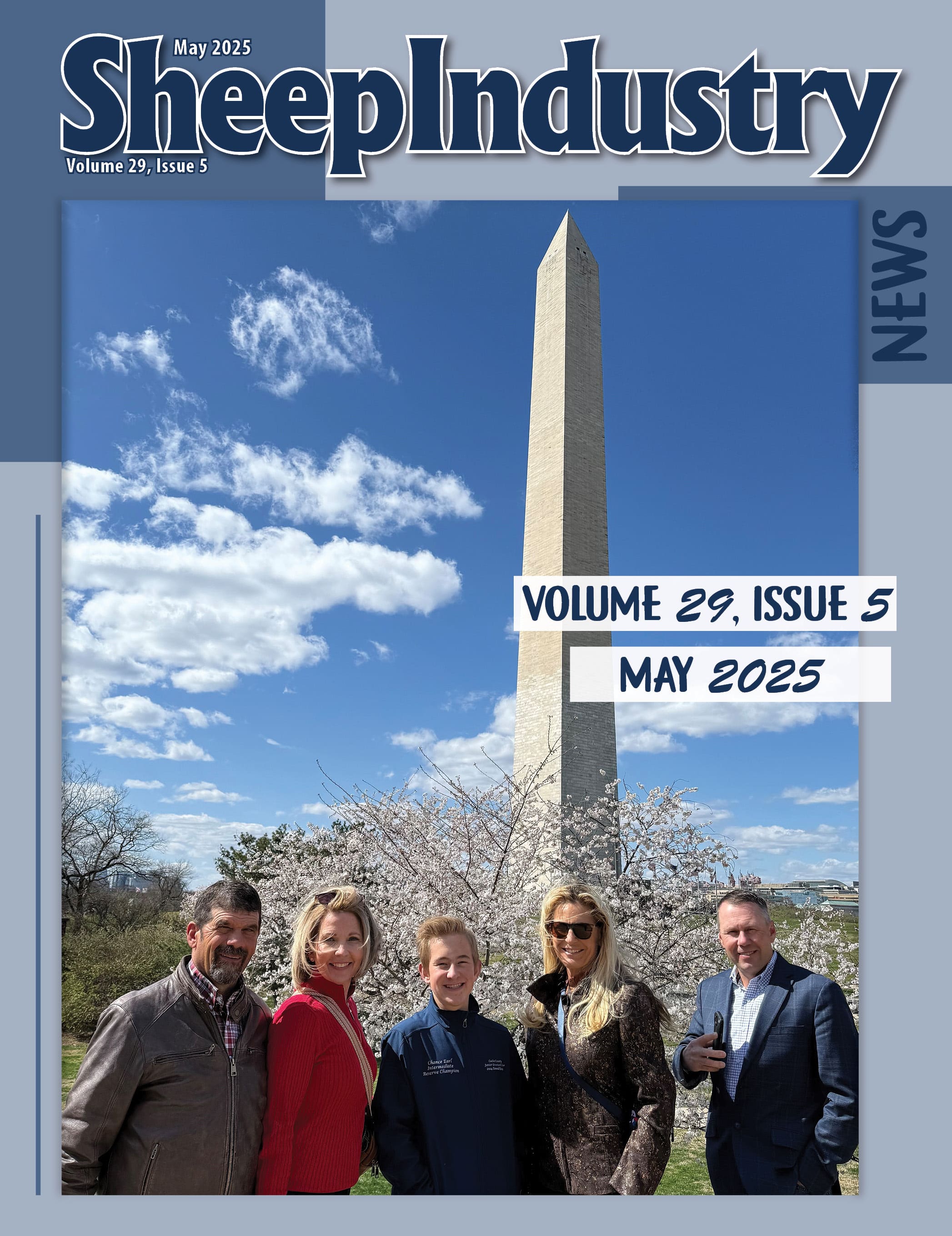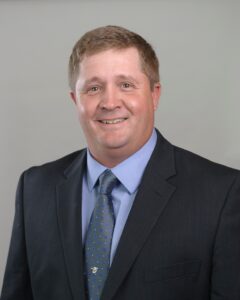Approximately 230 organizations have signed on to ASI’s annual letter of support for Wildlife Services, which was shared with appropriations leaders in both the U.S. Senate and House of Representatives in late March as sheep producers from around the country traveled to Washington, D.C., for the association’s annual Spring Trip. Signers of the letter include trade groups representing farmers, ranchers, airports, pilots, conservationists and sportsmen.
While the American sheep industry counts on Wildlife Services to play an essential role in protecting the nation’s flock, the agency is just as essential when it comes to protecting human life and American crops. For instance, bird strikes endanger civilian and military aircraft daily, but Wildlife Services has worked to mitigate this issue and improve travel safety in the process.
Here’s the full letter submitted to congressional leaders:
Wildlife causes more than $12.8 billion in damage each year to natural resources, public infrastructures, private property and agriculture. USDA Wildlife Services works to prevent, minimize or manage this damage and to protect human health and safety from conflicts with wildlife. Wildlife damage to U.S. livestock, aquaculture, small grains, fruits, vegetables and other agricultural products has been estimated to reach nearly $1 billion annually. Wildlife predators cause more than $232 million in death loss to livestock; field crop losses due to wildlife total $619 million annually; losses to vegetables, fruits and nuts total $146 million annually; and 70 percent of catfish farmers incur wildlife-related damage. The annual industry-wide value of lost catfish sales revenue to cormorants averages $47.2 million, ranging from $25.8 million to $65.4 million, depending upon predation levels in any given year. As a result, WS is an essential program to U.S. agriculture.
WS assists farmers and ranchers in 50 states and three territories to reduce the impact of predators on their animals, protecting 8.9 million head of cattle, 5.1 million head of sheep, and 56 million head of other livestock in 334,000 direct control actions. In FY23, WS provided more than 20,800 technical assistance activities that enabled 6,061 livestock producers to implement improved husbandry and methods such as use of guard animals, exclusion, fencing and predator dispersal. These activities included 53 predator management workshops attended by more than 2,700 individuals from 14 states, dispersal of 277,335 double-crested cormorants, and removal of 2,521 cormorants at aquaculture facilities in 15 states to protect farmed fish from avian depredation. The industry is worth $1.5 billion nationally (per National Marine Fisheries Service).
WS supported USDA’s Animal and Plant Health Inspection Services’ emergency response efforts to animal diseases, natural disasters and hazardous spills. In FY23, WS deployed 102 personnel on 172 deployments for Highly Pathogenic Avian Influenza and African Swine Fever. WS personnel have physically deployed to assist 12 states in response to HPAI. WS responded to the ASF detection on the island of Hispaniola and since detection in July 2021, has removed a total of 4,921 feral swine and sampled 3,042 for ASF on Puerto Rico and the U.S. Virgin Islands through FY23. The National Wildlife Disease Program also coordinated sample collection and evaluation or assisted state agencies with many other diseases in wildlife to include SARS-CoV-2, plague, tularemia, leptospirosis, rabies, chronic wasting disease and rabbit hemorrhagic disease virus.
In collaboration with state wildlife agencies, the U.S. Fish and Wildlife Service and Tribes, WS addresses livestock depredation and protects human health and safety related to wolves and grizzly bears. WS manages conflicts with gray wolves or Mexican gray wolves in 11 states. WS conducted operations with grizzly bears in three states, dispersing 22, capturing-relocating seven, and lethally removing six in FY23.
Congressional funding of $4.5 million in FY23 supported protecting livestock from large carnivore predation in 12 states using nonlethal strategies such as range riding, fladry installation and electric fence construction. WS filled 30 full-time positions and one part-time position to implement these strategies. WS’ National Wildlife Research Center evaluated the effectiveness of activities to reduce depredation.
In FY23 alone, WS conducted more than 72,950 technical assistance projects to reduce wildlife damage to property in urban, suburban and rural locations across the country which include: homes, schools, industrial facilities, roads, bridges, airports and airport runways, dams, and electrical and water systems. In addition, WS works to protect wetland habitat, riparian habitat, tidal marsh and timber from a variety of pest species including feral hogs and nutria, as well as the destruction that beaver can cause. Through cooperator-funded beaver damage management on more than 45,000 sites in 49 states, WS worked to protect roads, bridges, timber, agriculture, property, native habitat and other natural resources from flooding damage.
WS’ National Feral Swine Damage Management Program continued to reduce the impacts of invasive feral swine to American agriculture, natural resources and property, and to reduce threats to human health and safety, declaring a 12th state (Indiana) free of feral swine since the program’s inception in 2014. Work to reduce feral swine damage on approximately 187 million acres continued across 34 states and three territories. Funding for the Feral Swine Eradication and Control Pilot Program within the 2018 Farm Bill was set to expire at the end of FY23, however, Continuing Resolution (H.R. 6363) provided extensions, adding an additional $15 million, split between APHIS and the Natural Resources Conservation Service to continue the FSCP.
WS had 3,809 cooperative service and interagency agreements including agriculture, forestry, private industry, state wildlife agencies, state departments of health, state departments of agriculture, schools, universities, counties, local governments, Tribal governments, homeowner associations, conservation groups and others that together with WS, mitigate the damage and dangers that wildlife can inflict. As a biproduct of operational activities in FY23, WS donated more than 651,500 pounds of meat to food banks and other organizations providing for people in need. WS donated an additional 35,800 pounds of meat for non-human consumption.
WS flew 80 aircraft for 16,400 flight hours over a total of 1.1 million miles of flight operations to conduct livestock protection via predator removal, removal of invasive feral swine and brown tree snakes, aerial delivery of vaccine baits (rabies), emergency response and other missions.
WS processed more than 18,200 strikes with civil aircraft with more than 11,000 strikes with military aircraft also reported. More than 290,000 wildlife strikes with civil aviation have been reported to the National Wildlife Strike Database for civil aviation since WS began keeping records in 1990. Reported wildlife-aircraft strikes continue to increase as airport managers and biologists prioritize reporting all wildlife strikes to the FAA database.
Damaging strikes have decreased because of wildlife mitigation and awareness efforts at airfields. WS provided 333 staff years of direct support to assist a total of 782 civil, military, and joint-use airports including about 76 percent of all U.S. commercial passenger airports. WS trained 7,871 airport and military personnel to prevent wildlife from colliding with aircraft, improving travel safety. WS also provided direct staff support to reduce aviation hazards at 151 U.S. or coalition military airbases stateside and in southwest Asia, the Pacific Rim, Africa, Europe, and in the British Indian Ocean Territory, and an additional 110 civil-military airports protecting American military aviation assets and personnel.
It has been Wildlife Services’ cooperative nature that has allowed it to accomplish all of the above listed programs and has made it the most cost effective and efficient program in the federal government in the areas of wildlife damage management and public health and safety.



